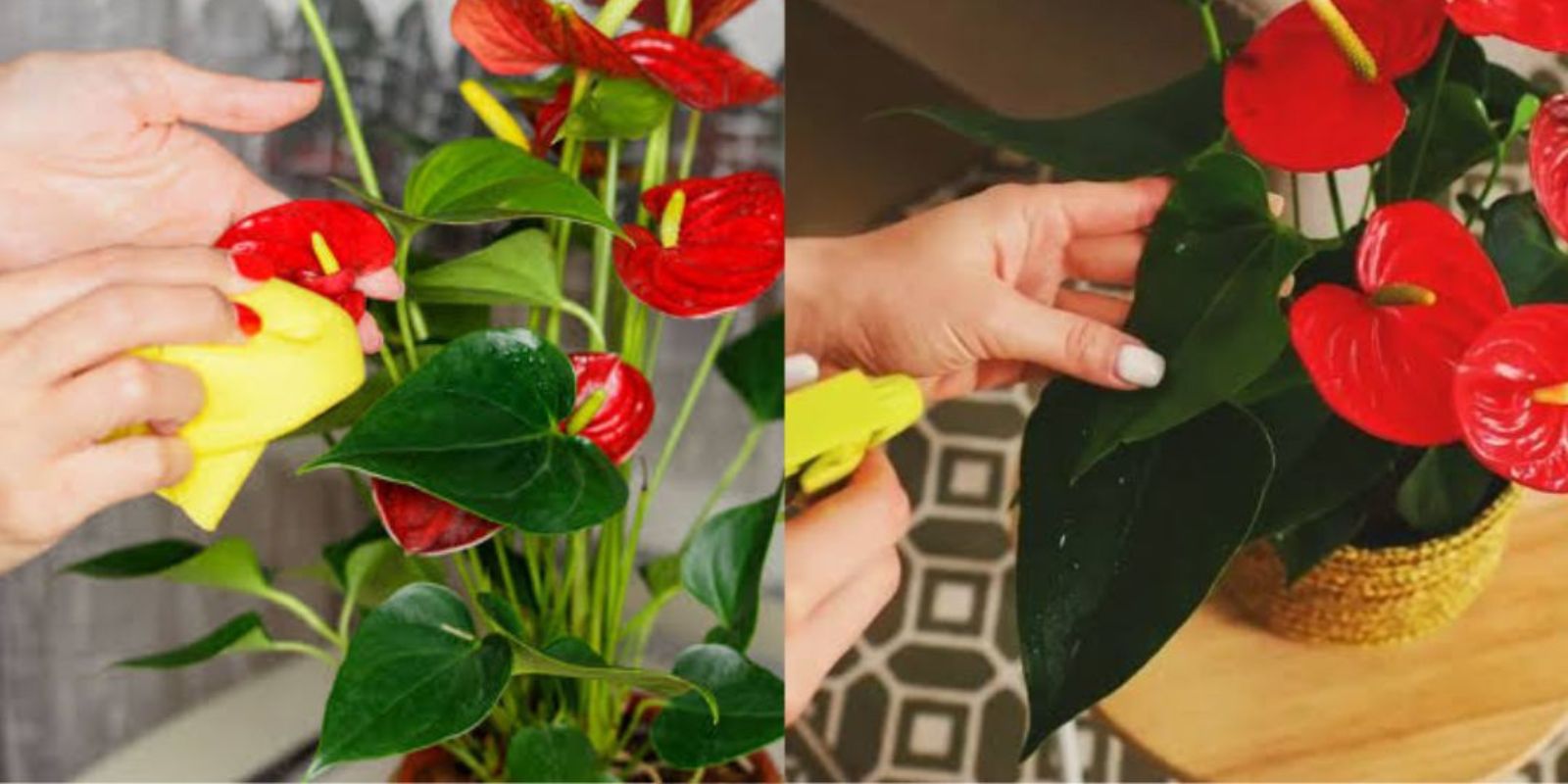Introduction
Anthuriums, often called “flamingo flowers” for their striking, heart-shaped blooms, are a favorite among plant enthusiasts. Known for their vibrant colors and long-lasting flowers, they can transform any space into a tropical paradise. However, achieving a continuous bloom cycle and keeping your Anthurium healthy requires proper care and attention. In this article, we’ll explore the secrets to getting an explosion of Anthurium flowers that will leave your neighbors in awe.
Understanding Anthuriums
Anthuriums are tropical plants native to Central and South America. They thrive in warm, humid conditions and prefer shaded environments similar to their natural habitat. The key to getting abundant blooms lies in mimicking these conditions and meeting the plant’s specific needs.
1. The Right Light for Blooming
Anthuriums require bright, indirect sunlight to thrive. Direct sunlight can scorch their delicate leaves, while insufficient light can result in stunted growth and no blooms.
- Ideal Placement: Place your Anthurium near a window with filtered light or use sheer curtains to diffuse sunlight.
- Signs of Incorrect Lighting: Yellowing leaves indicate too much light, while leggy growth signals too little light.
2. Maintain Warm Temperatures and Humidity
Anthuriums are tropical plants, so they flourish in warm and humid environments.
- Temperature Range: Keep them in a temperature range of 20–25°C (68–77°F). Avoid placing them near drafts, air conditioners, or heaters.
- Humidity Levels: Aim for 60–80% humidity.
- Tips to Increase Humidity: Mist the plant daily, place it on a pebble tray filled with water, or use a humidifier.
3. Provide the Perfect Soil Mix
The soil is a critical factor for Anthurium health. These plants require a light, well-draining mix to prevent waterlogging, which can lead to root rot.
- Recommended Soil Mix: Combine equal parts of orchid bark, peat moss, and perlite.
- pH Preference: Anthuriums prefer slightly acidic soil with a pH of 5.5 to 6.5.
4. Watering Wisely
Overwatering is one of the most common mistakes when caring for Anthuriums. Striking the right balance is key.
- When to Water: Allow the top inch of soil to dry out between waterings.
- How to Water: Water thoroughly until excess water drains out, but don’t let the plant sit in standing water.
- Avoid Tap Water: Use filtered or distilled water to avoid chlorine and fluoride, which can harm the plant.
5. Fertilizing for Abundant Blooms
Feeding your Anthurium regularly will ensure it has the nutrients needed for lush growth and vibrant flowers.
- Type of Fertilizer: Use a balanced fertilizer with a slightly higher phosphorus content (e.g., 10-30-10).
- Frequency: Fertilize every 4-6 weeks during the growing season (spring and summer).
- Caution: Over-fertilizing can burn the roots. Always dilute the fertilizer to half-strength.
6. Regular Pruning for Healthy Growth
Pruning helps redirect the plant’s energy to new growth and blooms.
- What to Prune: Remove dead or yellowing leaves and spent flowers.
- How to Prune: Use sharp, sterilized scissors and make clean cuts to avoid damaging the plant.
7. Repot Every 2-3 Years
Anthuriums grow best when their roots have ample room to expand. Repotting refreshes the soil and prevents root-bound issues.
- Signs It’s Time to Repot: Roots growing out of the drainage holes or soil drying out too quickly.
- How to Repot:
- Gently remove the plant from its pot.
- Trim any damaged or rotting roots.
- Replant in a slightly larger pot with fresh soil.
8. Promote Flowering with Special Tricks
Want to encourage your Anthurium to bloom more frequently? Try these tips:
- Sweet Spot for Blooms: Keep the plant slightly root-bound, as this can stimulate flowering.
- Natural Boost: Add a tablespoon of coffee grounds to the soil monthly to provide nitrogen.
- Organic Stimulant: Use diluted banana peel water (soak peels in water for 24 hours) as a natural fertilizer.
9. Monitor for Pests and Diseases
Common issues like pests and fungal diseases can hinder blooming.
- Pests: Watch out for aphids, spider mites, and mealybugs. Use insecticidal soap or neem oil to treat infestations.
- Fungal Diseases: Avoid overwatering and ensure good air circulation to prevent issues like root rot or leaf spots.
10. Patience and Consistency Pay Off
Anthuriums are relatively slow growers, but with consistent care, they will reward you with stunning flowers that last for weeks. Remember, healthy plants bloom more prolifically, so focus on providing the right conditions year-round.
Common Mistakes to Avoid
- Overwatering: Leading cause of root rot and yellowing leaves.
- Low Humidity: Results in dry, brown leaf tips.
- Using the Wrong Fertilizer: High nitrogen fertilizers promote foliage growth at the expense of flowers.
- Neglecting Light Needs: Insufficient light will prevent flowering altogether.
Conclusion
With these simple yet effective care tips, your Anthurium can produce an explosion of vibrant flowers that will become the centerpiece of your home or garden. Their tropical beauty is unmatched, and their care is rewarding once you get the hang of it.
Now that you know the secrets to abundant Anthurium blooms, it’s time to put these tips into practice. Share your progress or ask questions below – let’s grow together!
#AnthuriumCare #BloomingTips #TropicalPlants #IndoorGardening #HouseplantLovers #GreenThumb #PlantParenting #FlowerExplosion

